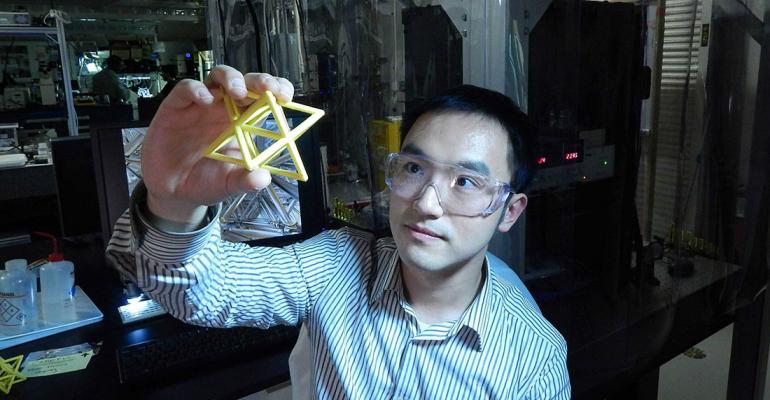Vehicle parts made with the equivalent of frozen smoke one day may be headed for manufacturing plants.
Researchers say a material with the same weight and density as aerogel – so light it's called frozen smoke – but with 10,000 times more stiffness, offers promise for the automotive-parts industry where lightweight, high-stiffness and high-strength materials are needed.
Lawrence Livermore National Laboratory and Massachusetts Institute of Technology researchers developed the material using additive micromanufacturing processes.
This involves creating super-tough 3-D microscale building blocks with the strength coming from the materials' geometric layout, rather than their chemical composition.
The research team describes in the journal Science how they developed micro-architected metamaterials – artificial materials with properties not found in nature – that maintain a nearly constant stiffness per unit-mass density, even at ultralow density.
Most lightweight cellular materials have mechanical properties that degrade substantially with reduced density, because their structural elements are more likely to bend under applied load.
The team's metamaterials, however, have ultra-stiff properties.
“These lightweight materials can withstand a load of at least 160,000 times their own weight,” Livermore engineer Xiaoyu Zheng says in a statement.
“The key to this ultrahigh stiffness is that all the microstructural elements in this material are designed to be over-constrained and do not bend under applied load.”
The team says the high stiffness is shown to be true with multiple constituent materials such as polymers, metals and ceramics.





